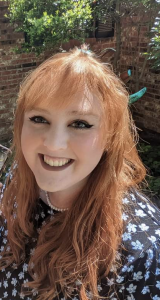19 Active Practice: Blogs vs. Articles
G.W. Currier and Kennedy Essmiller
In this section we’ve taken a brief look at the academic article, both its benefits and difficulties; and at the use of blogs. Regardless of how evident it is, the process of academic writing is communal, yet this communality is lost through its distribution and its practice. Because of this, we want to commend the multimodal and collaborative practice of blogging as an academic practice. “Academic” is not synonymous with “boring,” yet too often the “academic” requirements of undergraduate classrooms solidifies this perceived bond.
If, as we’ve argued, writing is an art and not a hard science, there shouldn’t be a standardization on the form of valuable communication. Articles are valuable. Blogs are valuable. They both have their time and place. What we desire and what we believe readers desire is a genuine attempt at communication. The digital era of writing and printing has revolutionized written communication in ways perhaps more significant than even Gutenberg’s 1450 moveable type; within our college classrooms, then, it seems appropriate that we use the tools that help us think of our world and our words, and help us communicate with each other and ourselves.
We see the following exercises not so much as a push back as a remedy, as a way of restoring a wholeness within individual students, classrooms, programs, and campuses. We encourage their use and adaptation in the classroom. We will both offer some closing thoughts as a challenge and an encouragement.
Exercises, Questions, and Ideas for Classroom Use:
Exercises, Questions, suggestions, and ideas for classroom use:
- Using a meme generator, create a meme that conveys a communication concept you’d like to explore further (Examples: authority, genre, style, and voice). Share with a peer and investigate the concept present in the meme.
- Select a piece of writing you consider to be “academic.” Explain the main points or arguments the article makes through a blog post. Use things such as gifs, memes, and links, to help make the original article clear for a popular audience.
- Locate a blog and an academic article focusing on the same topic. After reading both, which do you understand better? Write a list of points you recall from each. How does the blog make its argument, and how does the article?
- Maintain a blog using a platform like WordPress for the semester in which you respond to and reflect on the readings and ideas discussed in class. What connections do you see between these readings? What questions do you still have, or what ideas do you still want to explore? Use this blog as a platform to investigate and collaborate with peers, colleagues, and instructors.
Closing thoughts from G. W. Currier:

If I could leave you with only one encouragement, it would be this: There’s no such thing as a wasted word. Don’t ignore the academic article, but don’t place it on a pedestal, either. Don’t think the blog is the Savior of Bad Writing—clarity, intent, precision are all still needed to approach the blog as an academic practice. But what the blog demonstrates to us and for us in a way the published article doesn’t is the notion of progress. We’re unfinished. Our thinking is unfinished. When we write, we expose some vulnerable part of ourselves. If the blog isn’t a shield against all poor thinking, it is at least a grave from which it’s easier to resurrect.
Closing thoughts from Kennedy Essmiller:

We all quickly discover in our academic pursuits that we have preferences of reading and writing. If I could leave you with any advice, it is to recognize your strengths and play to them, but do not ignore your weaknesses. Instead, partner with those who have strengths that complement yours. Some of you might be more adept at the format expected from the traditional article. Others might prefer the flexibility that the blog format provides. Writing is not a lone practice, although it surely feels that way sometimes. Build your community and rely upon it, and you will create something you can be proud of!

